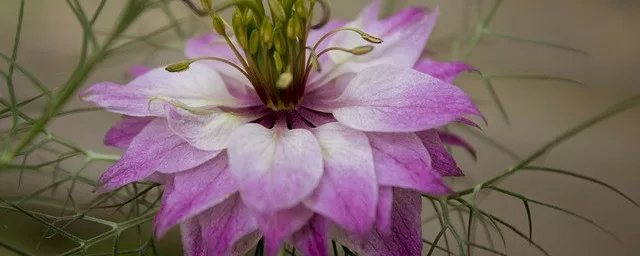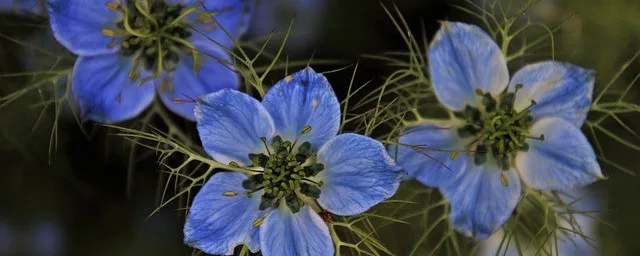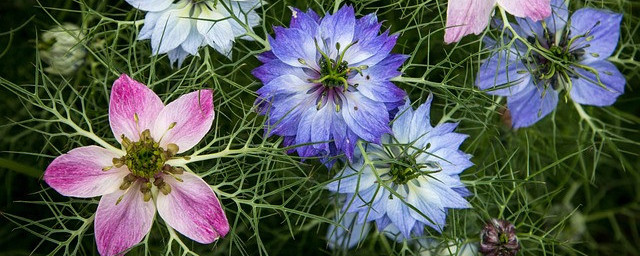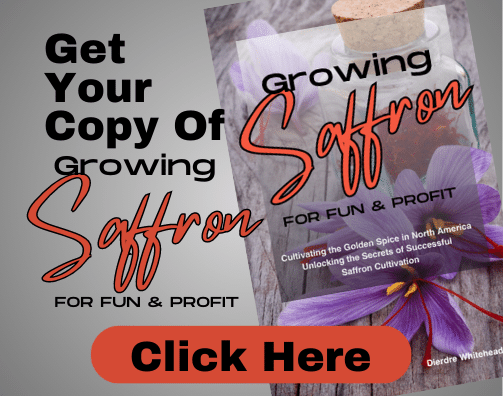Welcome to our comprehensive guide on growing and harvesting Love in the Mist, scientifically known as Nigella damascena. This charming flower, with its delicate blue petals and intricate seed pods, is an excellent choice for flower farmers and enthusiasts alike. In this blog post, we will take you through the best practices for sewing seeds, transplanting, soil preparation, and harvesting this beautiful cut flower. Let’s dive into Love in the Mist, growing and harvesting Nigella Damascena.
Understanding Love in the Mist
Love in the Mist is an annual flower that thrives in cooler climates. Its fern-like foliage and unique blue, pink, or white flowers make it an eye-catching addition to any garden or floral arrangement. Before we delve into the cultivation process, it’s essential to understand the plant’s requirements.
Soil Preparation
To give your Love in the Mist the best start, prepare the soil before planting. This flower prefers well-draining soil enriched with organic matter. Begin by removing any weeds or debris from the planting area. Loosen the soil to a depth of about 6-8 inches and mix in compost or well-rotted manure to improve fertility. This will provide the plant with the necessary nutrients for healthy growth.

Sowing Seeds
The best time to sow Love in the Mist seeds is in early spring, after the last frost has passed. Follow these steps for successful germination:
a. Choose a sunny or partially shaded spot in your garden.
b. Rake the soil to create a fine, level surface.
c. Scatter the seeds evenly over the prepared area and gently press them into the soil. Avoid burying the seeds too deeply, as they require light to germinate.
d. Lightly water the area, ensuring the soil remains moist throughout the germination process.
e. Within 10-20 days, you should start to see the seedlings emerge.

Transplanting
Once the seedlings have grown to a height of around 2-3 inches, it’s time to thin them out or transplant them into individual pots or desired flower beds. Follow these steps for successful transplantation:
a. Carefully lift the seedlings, ensuring you don’t damage their delicate roots.
b. Space the transplants at least 6-10 inches apart to allow them ample room to grow.
c. Gently firm the soil around each seedling and water thoroughly.
d. If you choose to transplant them directly into your flower beds, ensure they are properly acclimatized and the risk of frost has passed.

Maintenance and Care
Love in the Mist is a relatively low-maintenance flower, making it a suitable choice for busy flower farmers. Here are a few essential care tips:
a. Watering: Keep the soil consistently moist, especially during dry spells. Avoid overwatering, as it can lead to root rot.
b. Mulching: Apply a layer of organic mulch around the plants to retain moisture, suppress weed growth, and regulate soil temperature.
c. Fertilization: Love in the Mist generally does not require heavy feeding. However, you can apply a balanced, slow-release fertilizer once a month to promote healthy growth.
d. Pests and Diseases: Fortunately, Love in the Mist is relatively resistant to pests and diseases. However, keep an eye out for aphids or powdery mildew. Treat any issues promptly using organic pest control methods.

Harvesting
As Love in the Mist blooms, you’ll be delighted by its captivating flowers and unique seed pods. Here’s how to harvest them effectively.
a. Flowers: Harvest the flowers when they are in full bloom, but before they start to wilt. Cut the stems early in the morning or late in the evening for the best results. Place them immediately in a bucket of clean water to prevent dehydration.
b. Seed Pods: Allow a few flowers to mature fully, and you’ll be rewarded with intriguing seed pods. Once the pods have turned brown and dry on the plant, carefully cut them off and store them in a dry, cool place. These pods are wonderful additions to dried flower arrangements.

Conclusion
Love in the Mist, or Nigella damascena, is a versatile and enchanting flower that deserves a place in any cut flower business or garden. By following the best practices for sewing seeds, transplanting, soil preparation, and harvesting outlined in this guide, you’ll be on your way to cultivating a beautiful and thriving crop. Embrace the magic of Love in the Mist and enjoy its stunning blooms and intriguing seed pods throughout the season!





Hello There, Ultimately, I know flower farming can be a fulfilling and profitable venture for those with a passion for plants and a willingness to put in the necessary effort and expertise. Flower farming can indeed be a rewarding endeavor both in terms of enjoyment and financial gain. Cultivating flowers can offer a great sense of fulfillment and joy, as working with plants and witnessing their growth and beauty can be incredibly satisfying.
From a profit perspective, there is a demand for flowers in various markets, including retail florists, wedding and event planners, farmers’ markets, and even online sales. By carefully selecting popular and in-demand flower varieties, properly managing your farm, and establishing effective marketing and sales strategies, you have the potential to generate income from selling your flowers. And it’s important to note that flower farming requires dedication, knowledge, and hard work. Factors such as proper soil preparation, irrigation, pest control, and understanding the unique needs of each flower variety are crucial for successful cultivation. Additionally, market research and networking with potential buyers are essential for maximizing your profitability. It’s also worth considering the seasonality of flower farming, as certain flowers may only bloom during specific times of the year. This requires careful planning and potentially diversifying your product offerings to ensure a consistent supply and income.
Thank you for this very thoughtful and comprehensive approach to “Love in the Mist” flower preparation. I just a have a couple of questions for a beginner like me and would like to know more about the soil. Does it matter which kind of soil that I would purchase for “Love in the Mist”? Does it matter?
Is organic soil better than say something like “MiracleGro”? Or could I use either/or? What if I am late to sowing seeds after the first frost, will they still take in later spring or in early summer? Or should I wait until the perfect timing?
If I accidentally damage their roots, will I still be able to transplant them?
Also, do you know if they attract good pollinators like ladybugs, bees, or butterflies? I would love to attract them into my garden if so.
Again, thank you for such an informed post that was easy to read and easy to navigate. Wishing you nothing but the best in your blogging journey!